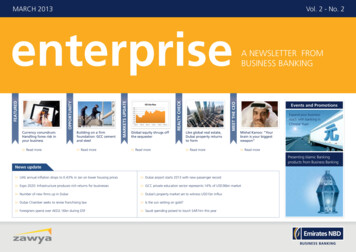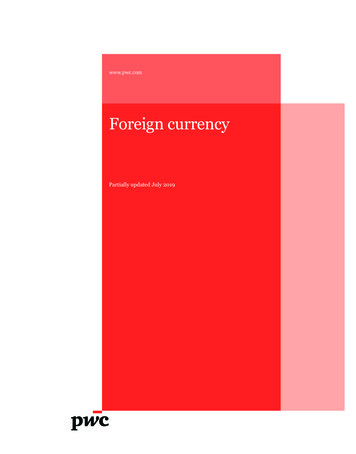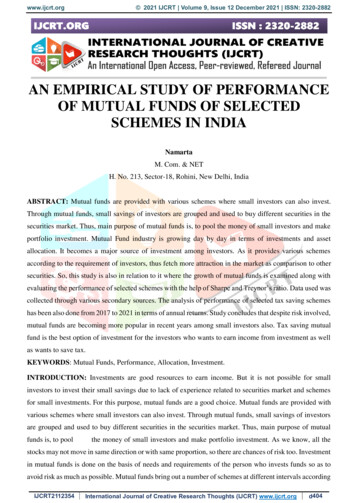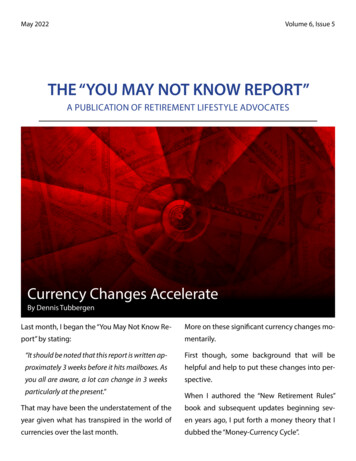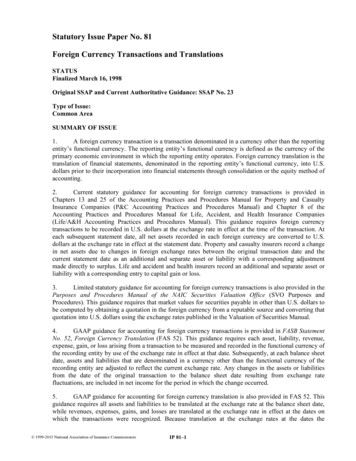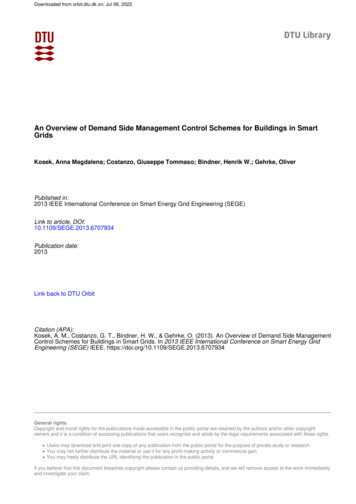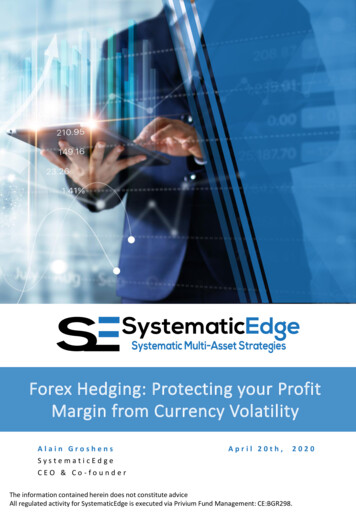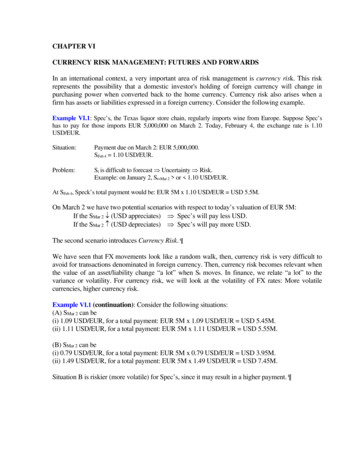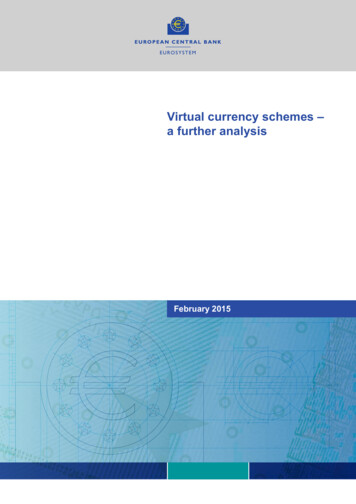
Transcription
Virtual currency schemes –a further analysis30 February 20156EE3,5E6EE80 E100% 53%E6E7,5E
European Central Bank, 2015Postal addressSonnemannstraße 2260314 Frankfurt am MainGermanyTelephone 49 69 1344 0Websitewww.ecb.europa.euAll rights reserved. Reproduction for educational andnon-commercial purposes is permitted provided thatthe source is acknowledged.ISBN 978-92-899-1560-1 (online)EU catalogue number QB-04-15-134-EN-N (online)Digital object identifier: 10.2866/662172
CONTENTSExecutive summary 4Introduction 61 Payments-related aspects of virtual currency schemes 71.1Key actors and their roles 1.2The diversity of virtual currency schemes 1.3Differences between various decentralised virtual currency schemes 101.4Emerging business models 111.5Data and figures on virtual currency schemes 141.6The user’s perspective on virtual currency schemes 18792 A closer look at virtual currency schemes from the perspective of a central bank 232.1Virtual currencies do not fit the economic or legal definition of money or currency 232.2A new definition from the perspective of a central bank 252.3Impact on the tasks of the ECB/Eurosystem 263 Legislative and regulatory responses to virtual currency schemes 293.1The interest and involvement of other European and international authorities 293.2National responses to virtual currency schemes 304 Conclusions 32Glossary 33Annex – National responses to virtual currency schemes in the EU 34ECBVirtual currency schemesFebruary 20143
Executive summaryVirtual currency schemes (VCS) have experienced remarkable developments over the past twoyears. As announced in its October 2012 report, the ECB has been examining these developments,partly in order to understand their potential relevance for retail payments.Although the term “virtual currency” is commonly used – indeed, it often appears in this report –the ECB does not regard virtual currencies, such as Bitcoin, as full forms of money as definedin economic literature. Virtual currency is also not money or currency from a legal perspective.For the purpose of this report, it is defined as a digital representation of value, not issued by acentral bank, credit institution or e-money institution, which in some circumstances can be usedas an alternative to money. The term “virtual currency scheme(s)” is used throughout this report todescribe both the aspect of value and that of the inherent or in-built mechanisms ensuring that valuecan be transferred.The VCS “ecosystem” consists mainly of specific, new categories of actors which were notpresent in the payments environment before. Moreover, emerging business models are builtaround obtaining, storing, accessing and transferring units of virtual currency. Many schemes haveappeared and some have already disappeared again, but around 500 exist at the time of writing.This is in stark contrast to the situation of two years ago when it was only really Bitcoin that wasknown about. Some of these new VCS are designed with slightly different technical characteristicsthat could improve the functionality or some elements in the ecosystem. For many, however, itis unclear what their purpose is, as it seems that only a few are used, or are intended to be used,for payments. The acceptance of VCS for payments does not seem widespread, although someprominent e-commerce merchants did announce that they would start accepting payments withBitcoin. Data concerning the usage of VCS as a payment method are not readily available. Bitcoinis used for around 69,000 transactions per day worldwide, compared with a total of 274 millionnon-cash retail payment transactions per day for the EU alone.VCS present several drawbacks and disadvantages for users, i.e. lack of transparency, clarity andcontinuity; high dependency on IT and on networks; anonymity of the actors involved; and highvolatility. In addition, users face payment system-like risks ow
3 ECB Virtual currency schemes February 2014 ExEcutivE summary 4 introduction 6 1 PaymEnts-rElatEd asPEcts of virtual currEncy schEmEs 7 1.1 Key actors and their roles 7 1.2 The diversity of virtual currency schemes 9 1.3 Differences between various decentralised virtual currency schemes 10 1.4 Emerging business models 11 1.5 Data and figures on virtual currency schemes 14
